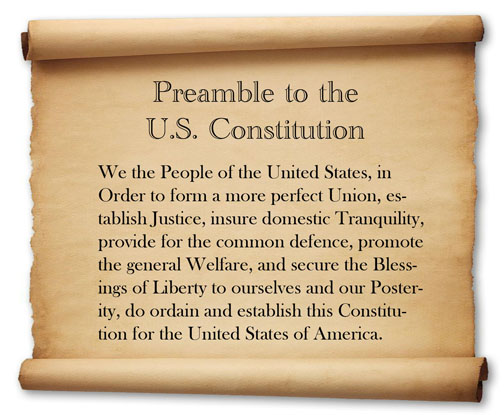Main Content
Lesson 1: Origins and Context of U.S. Homeland Security Law
The Context of Homeland Security Law
The British government provided protection, albeit under tyrannical conditions, to the colonialists, and the local government frequently had to resort to its own defenses. By the 1760's, as the demands from the Crown increased and became more unreasonable, it was intolerable to those who had envisioned a freer life; resistance was manifested in many ways, from refusal to pay taxes, to the Boston tea party, to actual skirmishes with British troops. These acts went directly against the sense of freedom and self-determination which the settlers considered to be the reason for their move to the new world.
The Covenant
The sum of the Colonialists' attitude toward an unfair distant ruler, and their reaction to the loss of freedom was articulated in the Declaration of Independence, a watershed communiqué in the history of the human political experience. That remarkable document made the case for asserting the improvement of one’s lot, and provided a formula for better governance. It recognized the validity of the global community, and the responsibility of nations to respect the dignity and welfare of their citizens. And, it legitimatized the right to overthrow an abusive government and assert national self-determination. It laid out a vision for a functional, limited government, with the consent of the governed; and, it provided a bill of particulars, listing those unacceptable abuses. All that remained was a political structure in which those ideals of a just society could be realized.
The Contract
After the Declaration, and the protracted war with Great Britain, during which the Continental Army coped with an ineffective Confederate Congress of the 13 free colonies, the need for a more united and effective government became obvious. Many vulnerabilities continued, with internal instability, based on a loose rule of law, and ineffective government under the Articles of Confederation (weak executive, powerless legislature and no discernible judiciary), and external threats from European powers and Indian tribes. The culminating event occurred in 1787 with the Convention in Philadelphia ostensibly to address the current government, but which resulted in the drafting of the Constitution. The remarkable undertaking by visionary framers would incorporate the noble concepts as well as the threats enunciated in the Declaration of Independence, and provide a framework for a federal government with stated purposes:

The structure for a national or federal government with three separate branches sharing powers and thus checking and balancing each other, all with limited powers, the rest of which were reserved to the States and the people was a formula for a successful nation, and a structure in which it could evolve. Over two centuries later a dynamic form of governance endures! See the Federalist Papers for additional explanations of the intent of the Framers.
